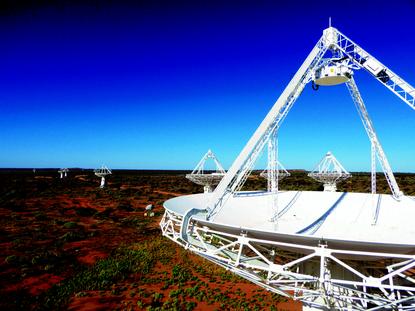New tech uses telco network to help scientists gaze into space
- 01 February, 2018 16:15

Telescopes at the Square Kilometre Array
Australian scientists have uncovered a way to use the telecommunications network to synchronise radio telescopes, which help scientists peer into deep space.
The team – which includes researchers from the Australian National University – have demonstrated for the first time that a stable frequency reference can be reliably transmitted more than 300 kilometres over a fibre optic network to link two radio telescopes.
Linking two telescopes currently
requires that each telescope has access to an atomic clock to record the
precise time when a signal is detected from an object in space, ANU said on
Thursday.
ANU professor Ken Baldwin said the new
technology could be particularly useful for the Square Kilometre Array, a
global effort to detect faint radio waves from deep space with a sensitivity
about 50 times greater than that of the Hubble telescope.
“This highly stable method for
transmitting the frequency reference promises to replace the need for expensive
atomic clocks, which cost around two hundred thousand dollars each,” he said.
“This new technique doesn’t require any
substantial changes to the rest of the fibre optic network and is easy to
implement,” he said. “By running the experiment on optical fibers also carrying
normal traffic, we showed that transmitting the stable frequency standard doesn’t
affect the data or telephone calls on the other channels.
“This is necessary to gain the cooperation
of the telecommunications companies that own these fibre networks.”
ANU conducted the research with Australia’s Academic and Research Network (AARNet), CSIRO, the National Measurement Institute, Macquarie University, and the University of Adelaide.

